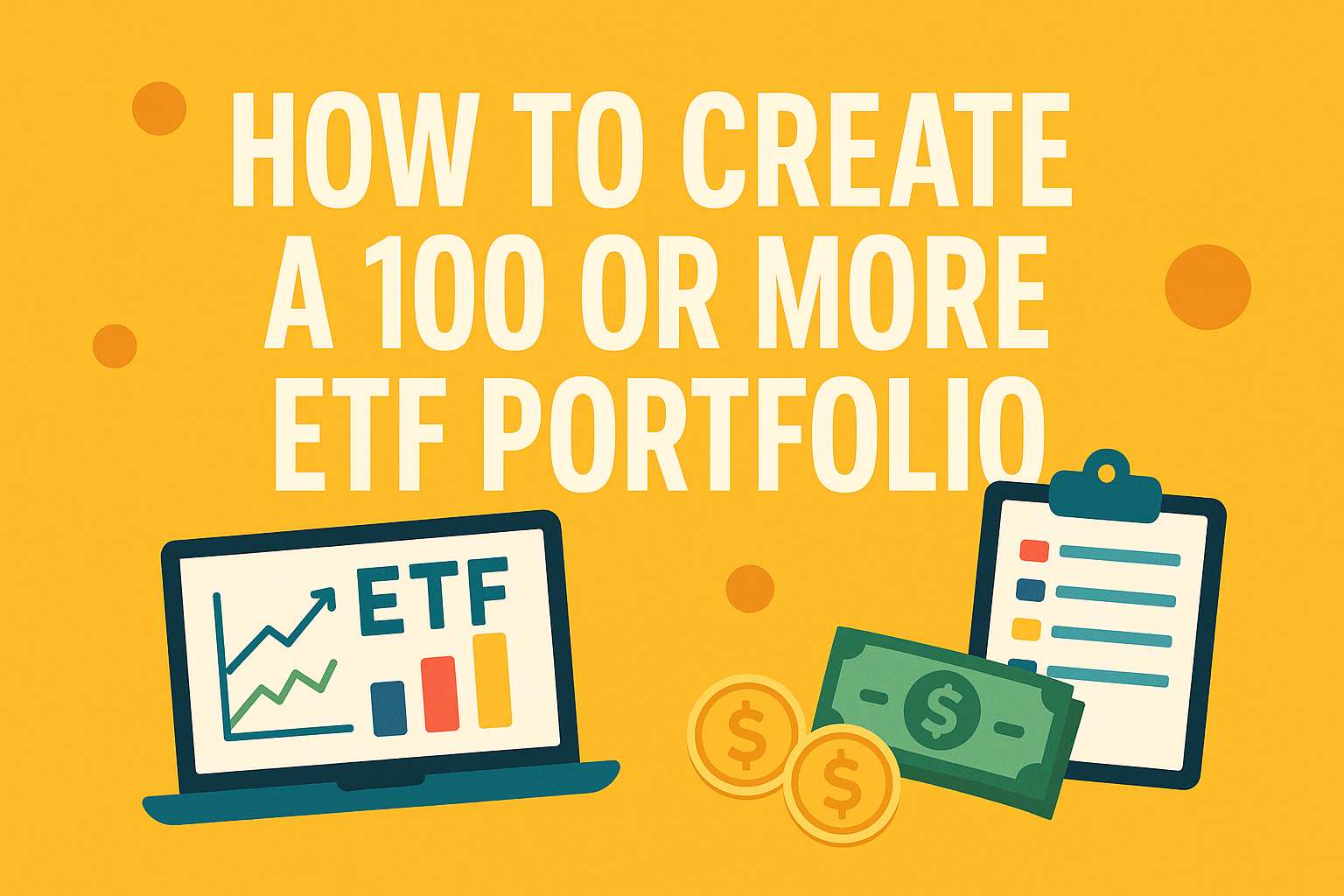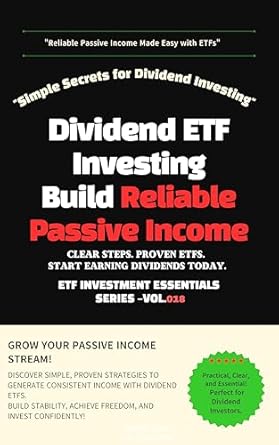Because Why Settle for Just a Few When You Can Own the Entire Financial Universe
Let’s be real — when most people talk about ETF investing, they’re thinking of three or four funds. Maybe a spicy fifth if they’re feeling adventurous. But you? You’re different. You’re not just here to play the game. You’re here to own the damn board.
If you’ve ever dreamed of waking up and saying, “I own a piece of everything — from Chilean lithium miners to Swedish vegan mayonnaise startups,” welcome to your new obsession: The 100+ ETF Portfolio. It’s bold, it’s overkill, and it might be the most beautifully ridiculous thing you ever do with your brokerage account. Let’s go.
Why 100+ ETFs?
Because Diversification is Sexy
Let’s break this down. A typical ETF is already diversified — it’s like a burrito stuffed with dozens or hundreds of ingredients (stocks). So why eat just one burrito when you can run an entire Mexican buffet?
With 100+ ETFs, you’re spreading risk, capturing different global trends, and flexing so hard on diversification that even Vanguard starts sweating.
Oh, and let’s not forget: the flex factor. “Yeah bro, I’m in 147 ETFs,” you casually drop at parties as people slowly back away in fear or admiration. Worth it.
Where to Begin: Pick Your Platform
Robinhood or Charles Schwab — Choose Your Weapon
Robinhood:
- Sleek, mobile-friendly, commission-free
- Fractional shares (perfect for buying 1/1000th of that Taiwan Semiconductor ETF)
- Downsides? No retirement accounts and a somewhat… meme-y reputation
Charles Schwab:
- Commission-free trades, better research tools
- Access to retirement accounts, automatic reinvestment, more grown-up vibes
- Excellent ETF screener tools, if you’re into that “thinking before buying” thing
Either one works, so long as it lets you hoard ETFs like a doomsday prepper with canned beans.
Disclaimer: As an Amazon Associate, I earn from qualifying purchases. This means if you click on a link and make a purchase, I may receive a small commission—at no additional cost to you.
Categories to Conquer
Because Your Portfolio Deserves a Little Bit of Everything (Like a Vegas Buffet)
If you want 100+ ETFs, you can’t just load up on 100 copies of SPY. That’s not diversification — that’s laziness. Here’s how to spice it up:
🗺️ Geographic ETFs
- VT (Total World Stock ETF)
- EWJ (Japan)
- EEM (Emerging Markets)
- VEU (All-World ex-US)
💼 Sector ETFs
- XLV (Healthcare)
- XLF (Financials)
- XLE (Energy)
- ARKG (Biotech with a sci-fi flavor)
🏡 REIT ETFs
- VNQ (U.S. Real Estate)
- SCHH (Cheap and cheerful)
- REM (Mortgage REITs aka real estate roulette)
- REET (International real estate — yeah, you fancy now)
⚙️ Thematic ETFs
- BOTZ (Robotics and AI)
- LIT (Lithium — because EVs aren’t going away)
- FIVG (5G Technology)
- UFO (Yes, a space ETF exists and yes, you should probably own it)
💰 Dividend & Income ETFs
- VYM (High Dividend Yield)
- SCHD (Dividend cult favorite)
- JEPI (Option-income wizardry)
- QYLD (Overhyped but fun to say out loud)
🥷 Defensive Plays
- GLD (Gold)
- TLT (Long-term bonds, yawn but safe)
- USFR (Floating rate treasury, your boring uncle would approve)
🌍 ESG and SRI
- ESGU (Sustainable investing with corporate sugar-coating)
- SUSA (Socially conscious and smug about it)
You get the idea — if there’s a niche, there’s probably an ETF. There’s even an ETF that shorts Cathie Wood’s ARK funds. Petty? Maybe. Beautiful? Absolutely.
Portfolio Construction: The Chaos Method
How to Not Totally Lose Your Mind
Step 1: Decide Your Budget
You don’t need a million bucks. Thanks to fractional shares, even $1,000 can get you started. Just don’t expect your portfolio to look like Warren Buffett’s right away. Or ever.
Step 2: Use a Spreadsheet or ETF Screener
Create a giant Google Sheet, color-code the hell out of it, and track:
- Ticker
- Category
- Expense ratio (keep it low, you cheap genius)
- Dividend yield
- Strategy or niche
Step 3: Allocate Broadly
Start with 10–15% in broad market ETFs (VT, VTI, etc.) to give your portfolio a solid base. Then scatter the rest like a madman at a yard sale.
Step 4: Avoid Duplication
Don’t buy five ETFs that all do the exact same thing. (Yes, I’m talking to you, guy who bought SPY, IVV, and VOO.)
Step 5: Automate & Rebalance
Use automatic reinvestment and set calendar reminders to rebalance quarterly or annually. Or whenever Mercury is in retrograde, your call.
Common Mistakes to Dodge Like Neo in The Matrix
- Overlapping Holdings: If 10 of your ETFs all hold Apple, congratulations — you’ve made your own personal Apple ETF.
- Chasing Hype: Just because there’s a Metaverse ETF doesn’t mean you need to buy it. (But maybe you do. Because YOLO.)
- Neglecting Fees: That 0.75% expense ratio might not sound like a lot, but over time, it can eat more than Godzilla at an all-you-can-eat buffet.
- Forgetting the Taxman: Dividend income? Short-term gains? Uncle Sam is lurking. Be tax-aware.
Final Thoughts: The Madness is the Method
Creating a 100+ ETF portfolio is like assembling your own Avengers team — except instead of superheroes, you’ve got a bunch of ticker symbols that may or may not beat the market.
Sure, it’s excessive. Maybe even a little unhinged. But it’s also educational, empowering, and — let’s face it — kinda fun.
With tools like Robinhood and Schwab at your fingertips, you can start small and build up over time. Just keep learning, diversifying, and avoiding putting all your chips on an ETF called “YOLO” (yes, that was real).
Remember: In the ETF world, more isn’t always better — but it’s definitely more fun.
Now go forth, portfolio Jedi. The ticker force is with you.
Disclaimer: This content is for entertainment and informational purposes only and should not be considered financial advice. Always do your own research and consult with a licensed financial advisor before making any investment decisions.








